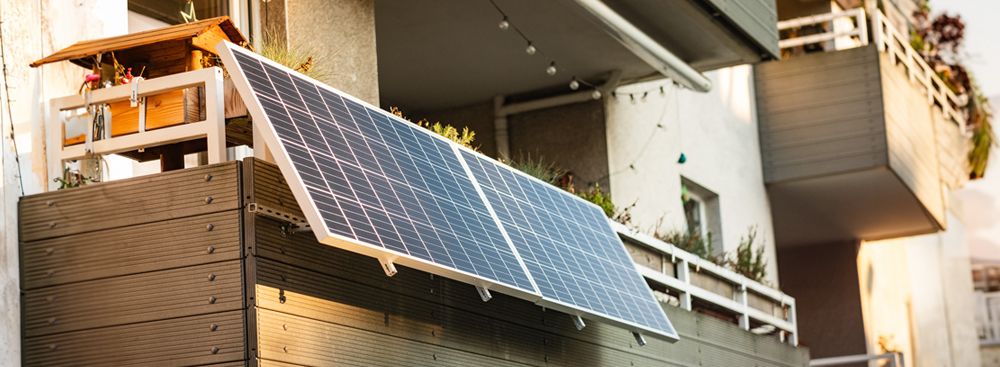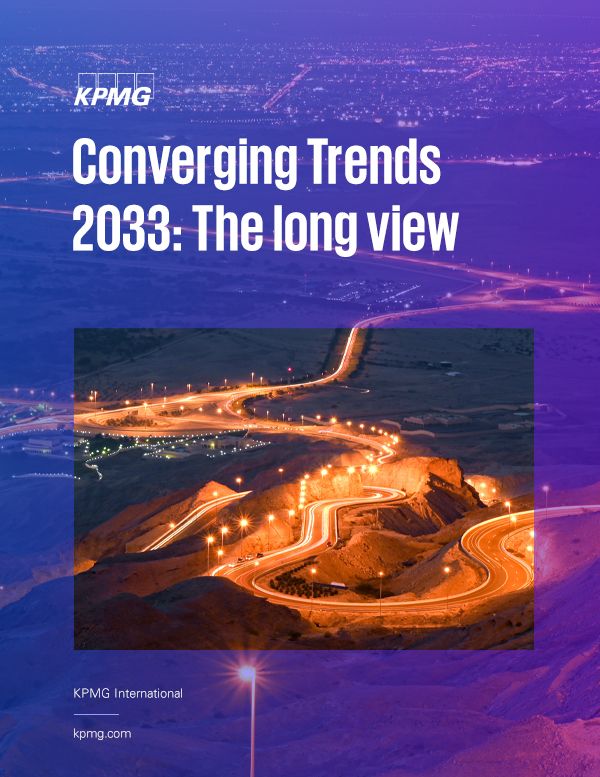We asked KPMG’s global infrastructure leaders to use their experience and insight to put themselves in the year 2033. We had them tell us what they saw, pick some winners and losers, and provide insights and ideas to help readers in the mid-2020s prepare for the world of 2033.
Be prepared: The trends and topics raised in this report are having a massive impact on the evolution of the infrastructure sector and the global economy. Infrastructure will play a key role in determining the outcomes we achieve as communities, countries and globally. In this report, we argue that it is time for sector leaders to start thinking differently about the future and their role in delivering it.
To make this report practical, we focused on three key yet interdependent themes – Cities, Sustainable development and Innovation. Here are some highlights of what our leaders discussed.
Explore the predictions below and read some of the highlights of what our leaders discussed. Download the full report for a deep dive into some scenario building and visualizations for the future.

The late 2020s will likely be seen by future generations as the era of urban revolution. Industrial-age norms will start to fall away. Hives of vibrant, sustainable activity will grow out of the existing concrete. We will start to recognize that we are a part of – not apart from – nature. And new ideas will emerge, thrive and peacefully coexist.
The risk is that this will lead to a bifurcation between the cities that are rapidly transforming and those that are not. Find out more, including the five key factors that will separate the winners from the losers, in the full report.

In 2033, we will be in the process of pulling ourselves back from the cliff edge. There won’t have been any ‘silver bullets.’ It will have been an evolution, not a revolution – a triumph of progress over perfection. And while certain targets will have been missed, the world has begun to adapt and embrace a more regenerative, sustainable, and equitable future.
Yet there will also be many different evolutionary paths to sustainability. Find out what the next 10 years might look like and the potential impact on infrastructure players and providers in the full report.

In many ways, the world in 2033 looks a lot like it does today. People still work, they still drive on roads, and they still need electricity. What has changed is the focus. Whereas in the past, infrastructure innovation was often poorly funded, weakly adopted and scattered in its use cases, by 2033, innovation in the infrastructure sector is tightly aligned to a small number of very important priorities.
Perhaps the most important change is in governments’ ability to accelerate innovation and adoption of new models. Find out how the leading governments can do it in the full report.

When relating this report to our City of Luxembourg, it really resonates. The report suggests that the path different cities take will be influenced by the age of the city. Many older cities will struggle to leave behind their existing assets and mindsets in order to plot a new course. Cities will need to think about how they will plan for and finance the upgrade of existing buildings to achieve Net Zero goals. In some cases, the answer will be to start fresh — either by turning former suburbs on the fringes of the old city into new satellite cities, or by building something completely new and unhindered by preconceived models and legacy systems. Others will work to upgrade the infrastructure and systems they already have, leveraging their existing investments and strengths to drive their transformation.
I am really looking forward to seeing how Luxembourg City transforms: the choices it makes to advance its priority objectives, ensuring purpose, livability, sustainability and equitable access, whilst taking into account economic and financial considerations. How will the city sustain its position as a go-to, vibrant and dynamic center, which is crucial for attracting and retaining top talent? Reflecting on the significant changes in our city over the past decade, such as the introduction of the tram, it is clear that progress has been made, yet there is still more to be done. The long-term plans of governments and municipalities undoubtedly play a role, but it is up to each of us to propel this forward. I’m proud that at KPMG Luxembourg, we are doing our part. With our plan to move to a brand-new headquarters before the end of the decade, we are betting on sustainability and are determined to offer one of the most creative work environments in the country. Take a closer look at our plans for achieving this and contributing to our city's success as a "winner" in terms of future infrastructure. Our new headquarters will stay in Kirchberg – the building's supporting structure will be made of wood, marking it as one of the country's largest wooden buildings.

Michael Eichmüller de Souza
Partner
KPMG Luxembourg
This article was originally published on kpmg.com.
Alexis Wolf
Partner
KPMG in Luxembourg
Pierre Kreemer
Partner, Head of Real Estate
KPMG in Luxembourg
Joseph de Souza
Partner, Head of Canada Desk
KPMG in Luxembourg
Michael Eichmüller de Souza
Partner
KPMG in Luxembourg



